Simultaneous elections to the Lok Sabha & State Assemblies are being debated again with the Law Commission’s draft report. The available data on simultaneous does not indicate any definitive trend. But National Parties with momentum at the National level might gain from simultaneous elections.
As Factly reported earlier, various political parties have differing views about holding simultaneous elections to the Lok Sabha & State Assemblies. The Law Commission of India has now put its draft report in the public domain on this subject. While recommending simultaneous elections, it has called for further discussion on the issue based on its draft report.
While the necessary consensus and constitutional amendments will take time, who stands to benefit if simultaneous elections were to be held? Does past election data suggest any trends?
Only Andhra Pradesh, Odisha & Sikkim had assembly elections along with the Lok Sabha election in 2004, 2009 and 2014. What do the past election results in these states suggest?
Andhra Pradesh
In the 2004 elections, the BJP as a junior partner had an alliance with TDP while the Congress was in alliance with TRS & the left parties. The Congress alliance’s vote share in the Lok Sabha elections was 2.16% more than its vote share in the Assembly. The BJP+TDP alliance lost more than 2% vote share when it came to the Lok Sabha election. The Congress won both the Assembly & Lok Sabha elections in 2004.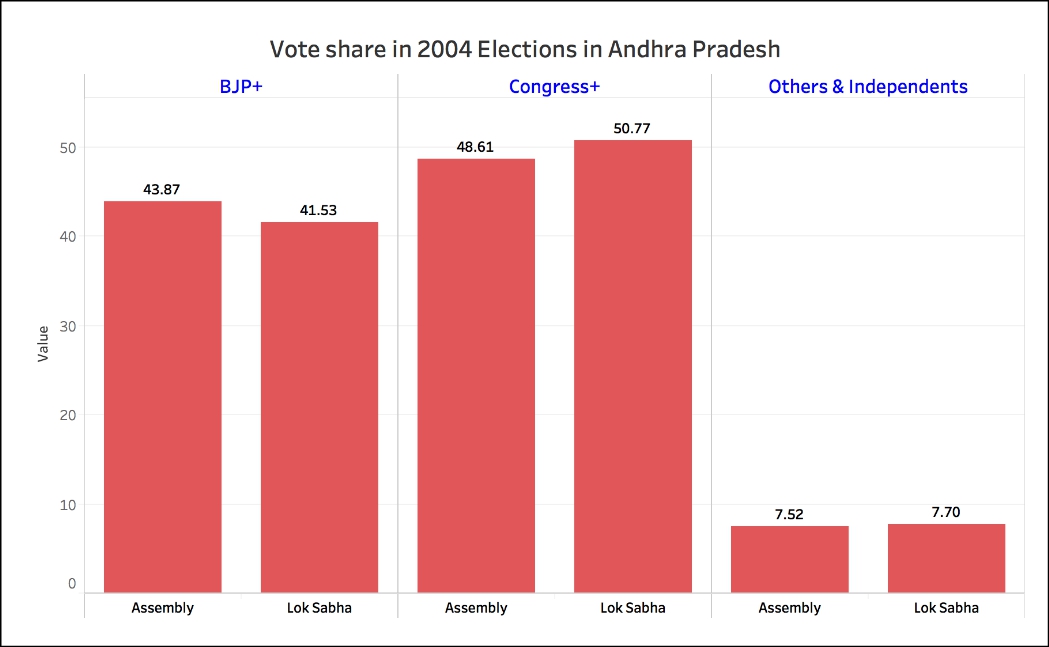
In 2009, the BJP & Congress contested alone while the regional parties like TDP & TRS were in alliance. Even in 2009, the Congress’s vote share in Lok Sabha elections was 2.4% more than its vote share in Assembly. For BJP, the Lok Sabha vote share was marginally more than its Assembly vote share. The regional parties lost more 3% vote share in the Lok Sabha elections compared to the Assembly elections. The Congress again won both the Assembly & Lok Sabha elections.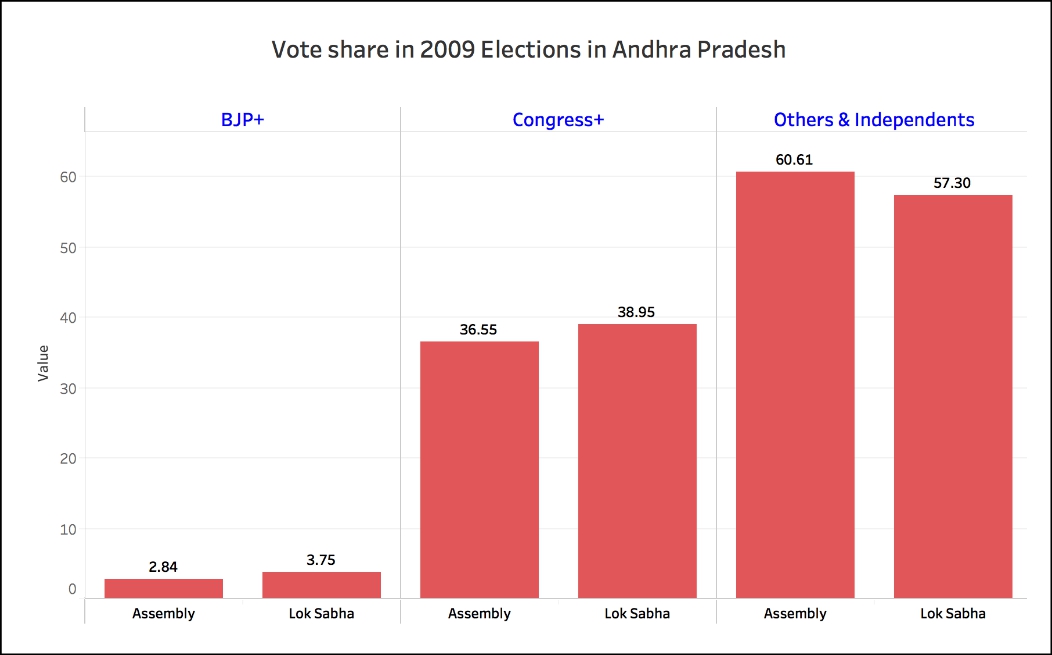
In 2014, the BJP was back in alliance with the TDP while Congress contested alone in the aftermath of the state bifurcation. The BJP alliance’s vote share for Lok Sabha was 1.22% more than its vote share in the Assembly. The Congress’s vote share for Assembly & Lok Sabha was more or less the same. The TRS which won in Telangana had a slightly greater vote share in Lok Sabha compared to the assembly. The BJP alliance won both in residual Andhra Pradesh & Lok Sabha.
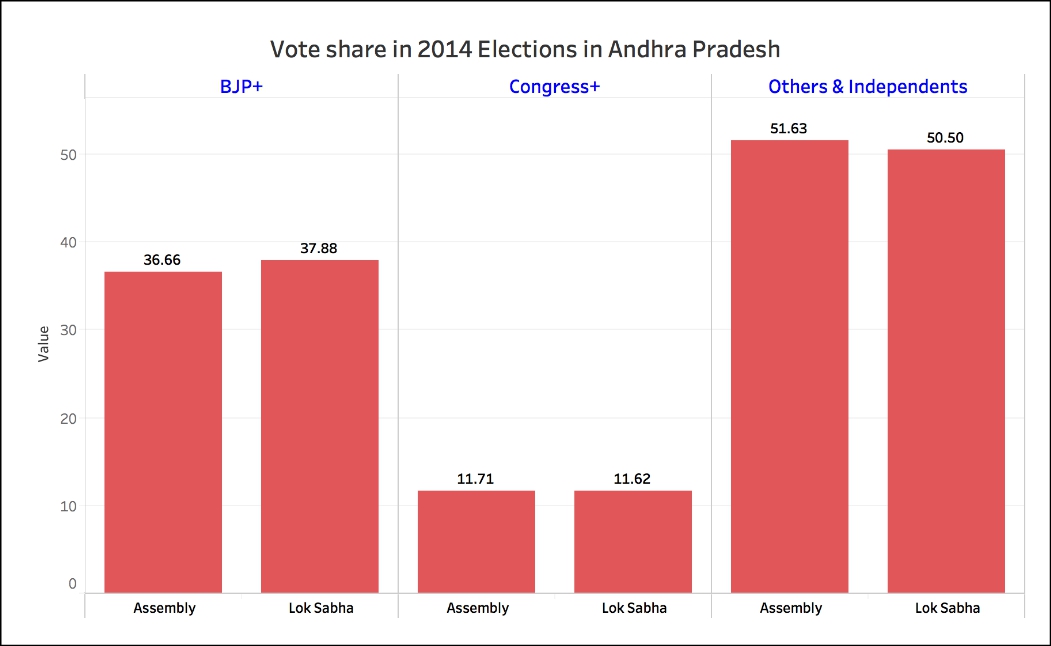
Odisha
In 2004, the BJP was in alliance with the BJD while the Congress contested alone. Both the BJP alliance & Congress gained close to 5% & 6% vote share respectively in the Lok Sabha elections compared to the Assembly. Independents & other smaller parties more than 10% vote share in the Lok Sabha. The BJP+BJD alliance won in the Assembly and majority of the Lok Sabha seats.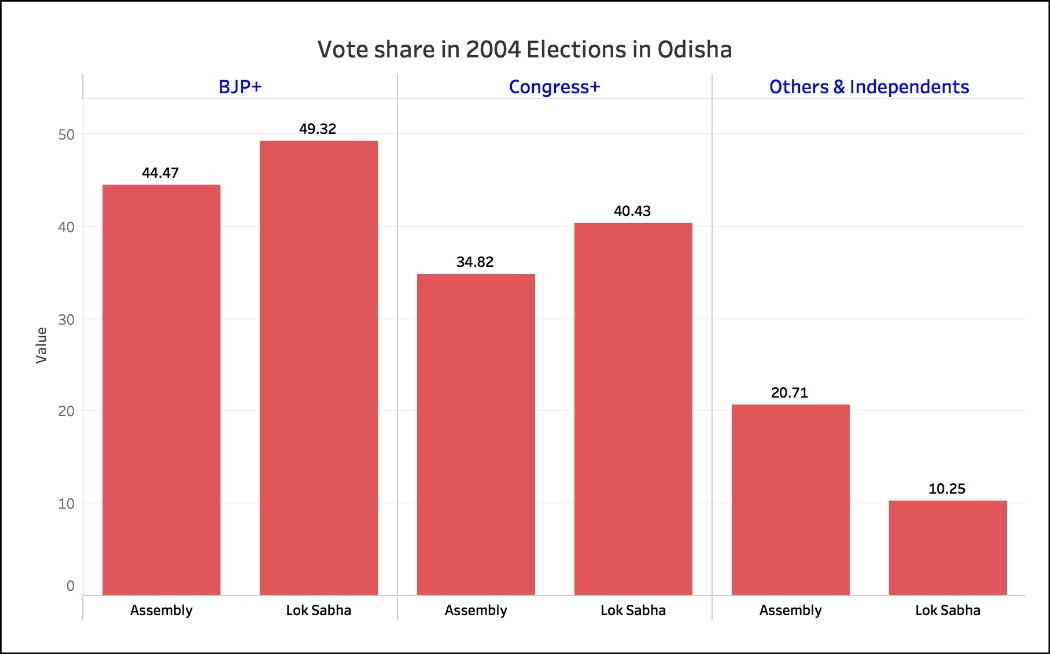
In 2009, the BJD & BJP contested separately. In these elections, both the Congress & BJP gained vote share in Lok Sabha compared to the Assembly. The Congress gained more than 3.5% while BJP gained around 1.8%. The BJD lost more than 1.6% vote share in Lok Sabha. The BJD won the Assembly as well as majority of the Lok Sabha seats.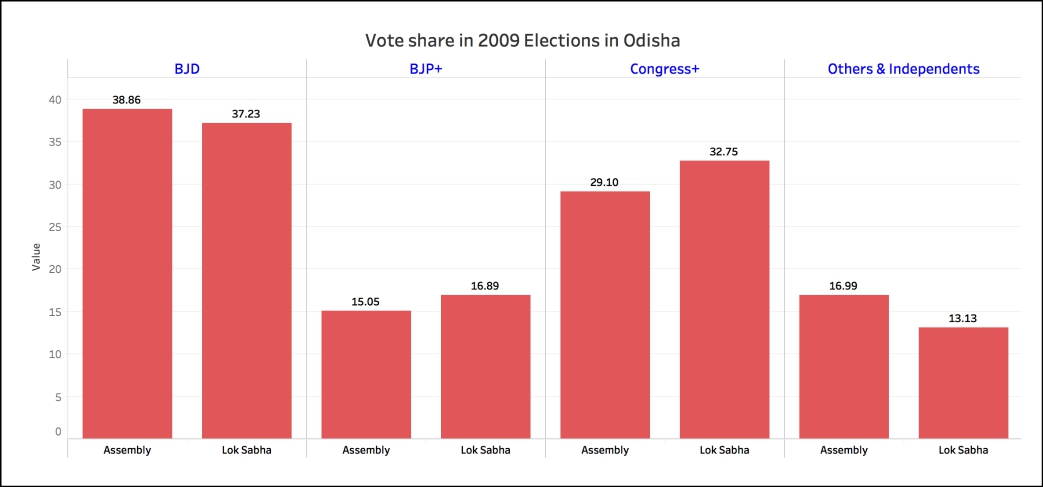
In 2014, all the three parties, BJD, BJP & Congress gained vote share in Lok Sabha compared to Assembly. But the greatest gain was by the BJP (3.8%) followed by BJD (1.42%). Congress gained only 0.67%. The BJD won both the Assembly & majority of the Lok Sabha seats.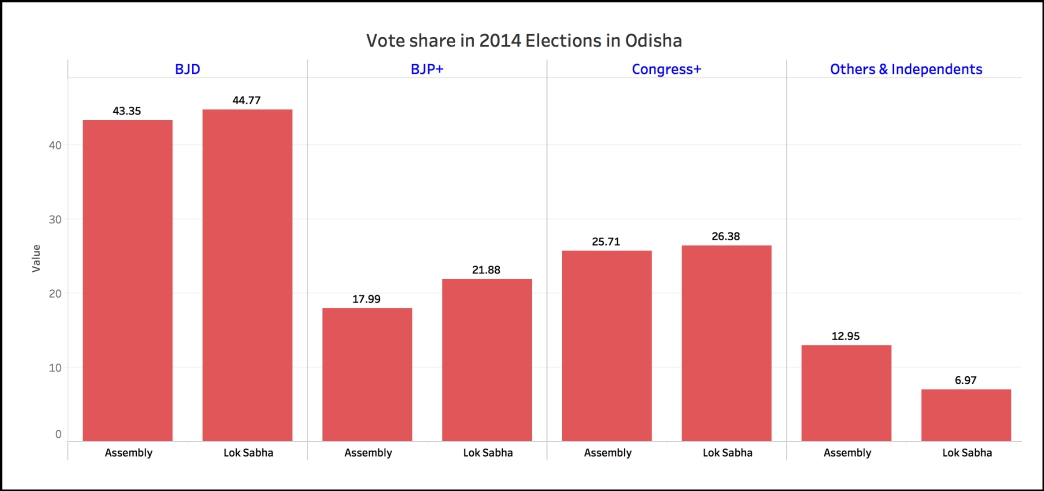
In Arunachal Pradesh & Sikkim
Simultaneous elections were held in Arunachal Pradesh only in 2014. The Congress lost close to 8% vote share in Lok Sabha elections while the BJP gained more than 15% vote share in the Lok Sabha. Both Congress & BJP won one seat each in the 2014 Lok Sabha elections here.
In Sikkim, both the Congress & BJP have marginally increased their vote share in Lok Sabha elections in each of the elections in 2004, 2009 & 2014. The strong regional party SDF’s vote share in Lok Sabha was only slightly less than the Assembly in 2004, 2009 as well as 2014.
What does the data indicate?
It has to be noted that many local factors including strong regional party leaders with an appeal, presence of other smaller parties,alliances etc. could impact the outcome of simultaneous elections, in addition to the national issues. While the available data does not point any definitive trend, certain things emerge.
- On most occasions, the big National Parties like BJP & Congress have gained vote share in Lok Sabha elections compared to the Assembly election when simultaneous elections were held.
- Parties that have won at the national level have gained a greater vote share (with or without allies) compared to parties that have lost at the national level during simultaneous elections. The Congress’s vote share in both Andhra Pradesh & Odisha in 2004 and 2009 is indicative of the same. In 2014, it was the BJP’s turn in Andhra Pradesh, Odisha & Arunachal Pradesh.
- Regional parties contesting alone have not lost vote share in the Lok Sabha only when there was a strong wave in their favour. BJD’s Lok Sabha election vote share in 2014 in Odisha and TRS’s Lok Sabha vote share in 2014 in Telangana are indicative of the same.


